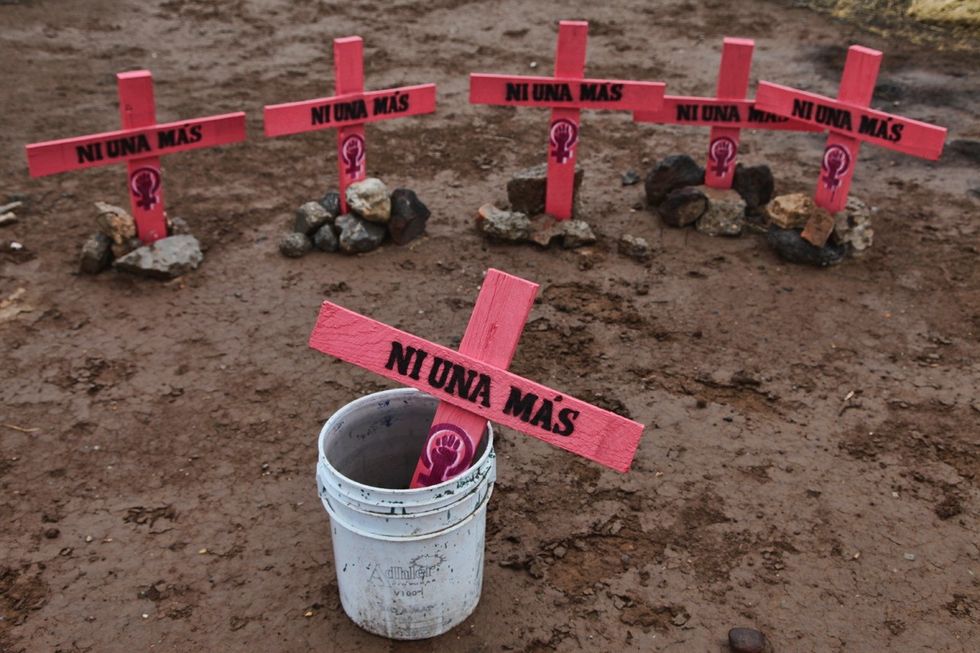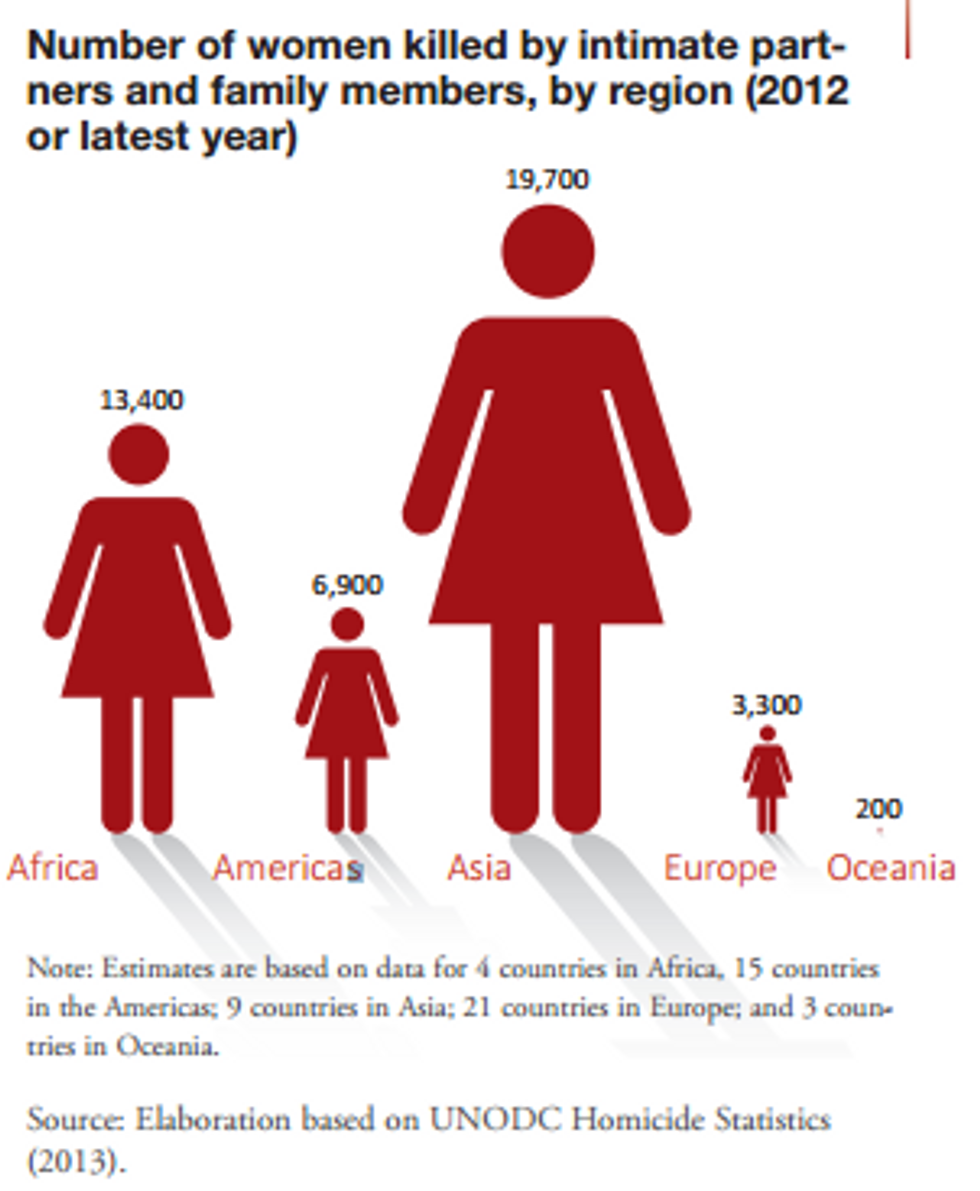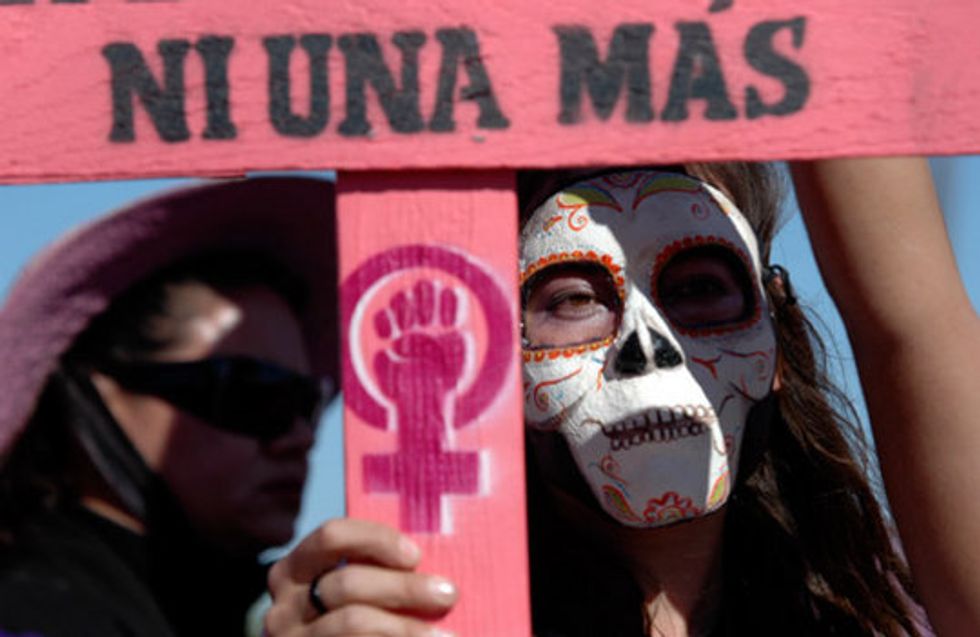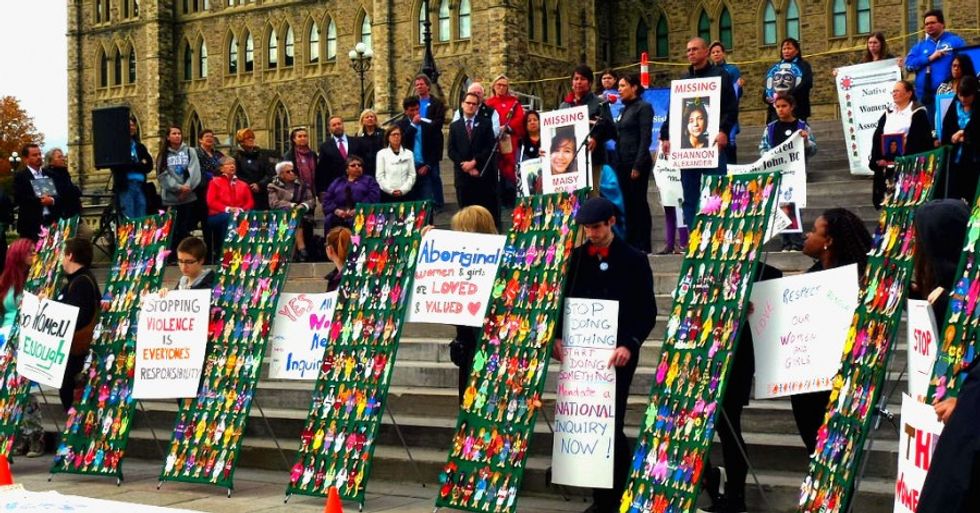Mersin, Turkey. Minnesota. Ciudad Juárez. Chihuahua City. Guatemala. India. All of these locations have a rising phenomenon in common, and it isn't a disease. It's something equally morbid-- Femicide.
Femicide isn't just a term for the murder of a woman. The term was coined by sociologist Diana E. H. Russel in 1976, used in her testimony on femicide for a Belgium convention that year. As defined by the UN Studies Association (UNSA),it is "the killing of a woman or girl because she is a woman or girl." It's the extreme manifestation of violence against women. If there is a relation between gender and the reason for the murder, it is femicide.
This relation between gender and violence has been seen, and is rising, all over the world. Even just in Minnesota, 23 femicides occurred in 2014, and 34 in 2015. In Guatemala, on average, two women are murdered each day. Between 1985 and and 2005, 1.8 million girls under the age of 6 (live births) were killed in India. 66,000 women around the world are killed each year. And 67% of these homicides are committed by former boyfriends or husbands.
Two cases of femicides in the past few years are reason for more awareness being brought to this anomaly. The case of Özgecan Aslan, and the women of Ciudad Juárez. Özgecan Aslan was a Turkish university student who was beaten and stabbed to death after fighting off an attack from her bus driver. After a trial, and numerous protests from the people of Turkey, the driver, along with his father and friend (who helped him dispose of the body) were sentenced.
More recently, the case, or really, cases of the women and their families in Ciudad Juárez, Mexico--a city on the U.S. and Mexico border-- have come to light. At least 6 women are killed everyday in Mexico, and in Ciudad Juárez, at least 1500 have been murdered since the mid-1990s. 727 have disappeared between 2010 and 2014. Many have been found to be victims of rape, sex trafficking, or domestic abuse. And of those who have committed these murders, only 1.6% have actually been sentenced by the government. With the frustration with the government and the loss of their daughters, parents of the victims formed Nuestros Hijas de Regreso a Casa/ ¡Ni Uno Más! (May Our Daughters Return Home/ Not One More!), a group formed to bring awareness to the epidemic and protest the public's, as well as the government's, mistreatment of it.
While the organization has done a lot to bring awareness to the femicide problem in Mexico, there is still a lot to be desired for awareness around the world. Especially here in the U.S., where it is a term that's rarely hear of. And where on both of our borders, there are missing women epidemics; with 1,200 missing or murdered indigenous Canadian women.
What we can do as a nation, and as a collective people of this planet, is continue to raise awareness of this phenomenon, and come up with solutions to put into action. Such as petition for discussions in the UN about solutions, and providing women here in America with more resources when in an abusive relationships, as well as more safe places for them.
The Mexican government needs to be brought to care about the poor communities in which a majority of these femicides are happening. The United States need to start caring that some of citizens are crossing its borders to commit rape and murder without penalty. The world really needs to start caring that thousands upon thousands of women are getting murdered each year all over simply because they are women.










 The minimum wage is not a living wage.
StableDiffusion
The minimum wage is not a living wage.
StableDiffusion
 influential nations
StableDiffusion
influential nations
StableDiffusion












